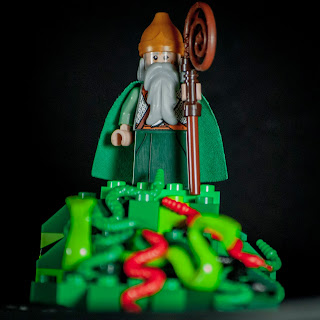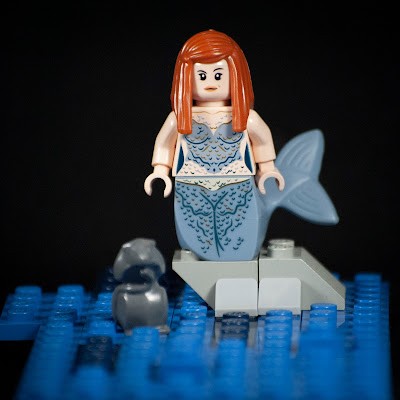St. Patrick of Ireland
St. Patrick is one of the most well-known saints in the world, and rightly so. His humility and boldness spurred one of the most amazing conversion stories. The conversion of Ireland occurred without bloodshed or conquest, and happened so rapidly that slavery (which was commonplace at the beginning of Patrick's mission) was completely eradicated in Ireland within his own life.
One of the most well-known legends about Patrick -- chasing the snakes out of Ireland -- probably never happened, but his story is a fascinating tale even without it.
Lifetime: ~386 to 461
Region: Ireland
Patronages: Ireland; Snakes
Iconograpy: Green robe; Miter and crosier; Shamrock; Snakes
Feast Day: March 17
Region: Ireland
Patronages: Ireland; Snakes
Iconograpy: Green robe; Miter and crosier; Shamrock; Snakes
Feast Day: March 17
Patrick, known as Patricius in his native Latin, was born in Britain in what was then part of the Roman empire. Patrick's family was somewhat wealthy and Patrick would have experienced little hardship in his early life.
But then, when he was a teenager, Patrick was captured by Irish pirates and brought into slavery in Ireland, where he was forced to live naked and tend his new master's sheep.
Patrick had grown up Christian -- his father was even a deacon -- but he never really experienced his faith when he was young. As a Roman citizen, it was just part of the culture and not a personal relationship. But as a slave in pagan Ireland, that changed completely.
Through all the hardship and hunger, snow and sunburns, all the pain and despair that came along with his slavery, young Patrick learned to pray to God in a truly deep and authentic way. For six years Patrick lived as a slave, and all throughout it his prayer life and relationship with God deepened ever further, until finally, Patrick received a vision.
Following his vision, Patrick walked 200 miles to the coast, naked and nearly starving the entire way, without being spotted and re-captured. Even more amazingly, when he arrived to the location where his vision led him, there was a boat of Roman sailors who brought him back to Britain.
His family was overjoyed at his return, but soon Patrick found that he no longer wanted the cozy life he had grown up with. His heart ached for the Irish pagans who had enslaved him, for he knew that they hadn't heard the story of how Jesus died to set everyone free.
After another vision, Patrick knew what he must do. First, he had to teach himself to read and write, for in his captivity he had missed out on his literacy education. Then he went to seminary and became a priest, where he was eventually appointed bishop. Finally, he was sent back to Ireland to fulfill the vision.
Before Patrick, nobody had tried to peacefully convert an entire country. In the early Christian church, conversion of families occurred often, and then as the Roman empire became Christian, conquered countries were converted as they entered Roman rule. But Ireland was filled with loosely-connected clans of warriors who hated having someone telling them what to do, and all of Rome's efforts to subdue them had failed.
However, Patrick's time as a slave had let him see sides of the Irish that the Romans before him couldn't. He could see how the seeds for God's story were planted in their myths and rituals, and he could see that they weren't just a bunch of savage barbarians, but were a passionate people who loved freedom and art and could see beauty in all of creation.
So Patrick returned to Ireland with no army to protect him, armed with only the Word of God. He met with kings and chieftains and druids and noblewomen. He was robbed, beaten, imprisoned, and threatened with death. But he continued his mission for 40 years until his death.
And by the time of his death, Ireland had gone from a land of illiterate warriors on the edge of the world to a land that in some ways exemplified Christ's teaching even more than his native Rome. Slavery was eradicated, monasteries and hermits abounded, and battles dwindled to almost none.
Ireland would go on to produce many other saints, such as Muirgen the Mermaid, Modmonoc of Ossory, and Brigid of Kildare, among many others.
St. Patrick's Breastplate Prayer
Christ be within me,
Christ behind me,
Christ before me,
Christ beside me,
Christ to win me,
Christ to comfort and restore me,
Christ beneath me,
Christ above me,
Christ inquired,
Christ in danger,
Christ in hearts of all that love me,
Christ in mouth of friend and stranger.






